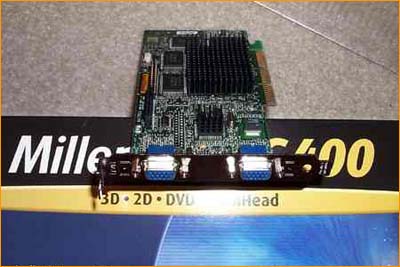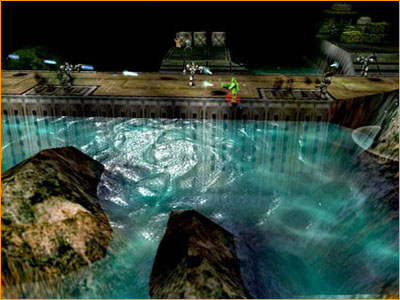Matrox G400
Their disadvantage was that Matrox products were not exhibited on the gaming market, thereby losing a significant market share and, quite possibly, this could explain the failure of the G200. The G200 was a good card, but it lacked speed, which is the most important video card selection criterion. Therefore, the Matrox - G400 card was released. This model was presented in two versions: G400 and G400 MAX. The G400 differed markedly from its younger brother the G200, including many amazing bells and whistles that were first used in the G400, most notably the Environmental Bump Mapping Environment and its Dual Head display.

Environment Mapped Bump Mapping
First introduced in DirectX in September 1998, the Extrusion Transform Display Environment is, in terms of time, a long and tedious invention. Although EMBM (Environment Mapped Bump Mapping) is built into DirectX, it requires a video card to run. The Matrox G400 was the first video card to implement this technology and is currently the only video card on the market that supports this technology. To describe EMBM somehow, we can say that the Extrusion Transform gives surface and depth to various flat objects, which usually look blurry and squared on the display. The execution algorithm of this technology is too complicated to describe, but easy to understand. We will give a short summary in a comic form.
An animated map of the environment is what we're aiming for, since that's what the render object is. To achieve this, simply take an Environment map, use the extrude transform operation, and then apply a regular extrusion map and you have a lively environment map in front of you. Of course, if it's a bumped-mapped texture, which is what we're really after, you only need to map the texture, apply the environment mapping operation, and then use the animated environment map to get the bumped texture.
More on Bump Mapping
It can be said that the realism and visualization that is achieved with the Environment Mapped Bump Mapping Display Environment is simply revolutionary. Take a look at the screenshots of Rage Software's Expendable and you'll see the difference. The first screenshot is not using the extrude transform technology, and the second one (which is more elegant) is using the extrude transform.


Specifications Matrox G400
RAMDAC component of 300 MHz gives the following: removes all flickering of the display, ultra-high resolution and color palette.
The unique 256-bit DualBus architecture composed of 128-bit
AGP (Accelerated Graphic Port) memory buses achieves the highest throughput
.
Support for full screen DVD and TV OUT displays with full access to the Windows desktop on the main monitor.
32MB high bandwidth SGRAM
Environment Mapped Bump Mapping



